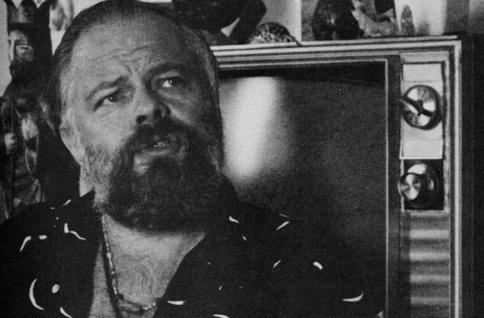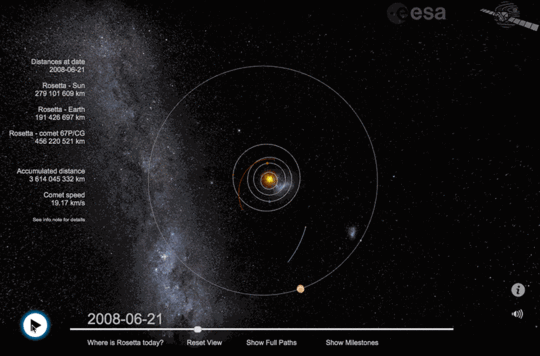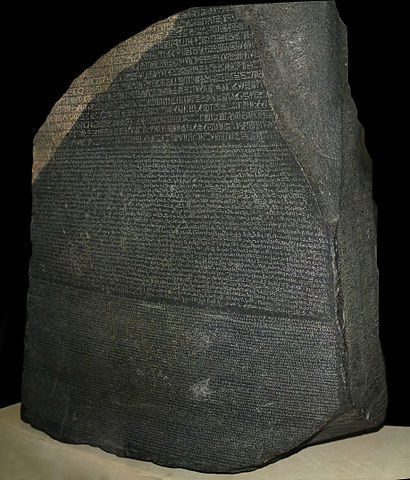Stewart Brand's Blog, page 47
November 12, 2014
November at The Interval: Erik Davis on PKD and Kevin Kelly’s Cool Tools
Tickets are now on sale for the next two Interval salon talks. We end 02014 with talks by two fantastic speakers.
Tickets: November 18, 02014 – Erik Davis at The Interval on Philip K Dick
Tickets: November 25, 02014 – Kevin Kelly at The Interval Cool Tools book event
Philip K. Dick is widely acknowledged as one of the most important–and prophetic–science fiction writers of the last century. Since his death in the early 1980s his reputation has grown, first as a cult icon and ultimately into mainstream recognition. Popular awareness has followed from many adaptations of his stories to the big screen including such films as Blade Runner, Total Recall (twice), Minority Report, and A Scanner Darkly.

Erik Davis speaks on 11/18/02014 at the Interval
Erik Davis is an award-winning journalist, author, independent scholar, and lecturer based in San Francisco. His book TechGnosis: Myth, Magic, and Mysticism in the Age of Information (published in 1998 and due in a new edition in 02015) was lavishly praised by Bruce Sterling, Terrence McKenna and Hakim Bey, amongst others.
Erik has been writing about Philip K. Dick since the latter part of the 20th Century beginning with his senior thesis at Yale. He went to on to co-edit The Exegesis of Philip K. Dick and is currently writing a dissertation on “High Weirdness” figures in the early 01970s, including PKD. Tickets are limited and will sell out.The talk is this Tuesday, 11/18.
Tickets: November 18, 02014 – Erik Davis at The Interval on Philip K Dick
Tickets: November 25, 02014 – Kevin Kelly at The Interval Cool Tools book event
After speaking for Long Now in a sold out Seminar About Long-term Thinking on the technium, Kevin Kelly will appears at The Interval at a special event featuring his book Cool Tools.
Cool Tools is a highly curated selection of the best tools available for individuals and small groups. Tools include hand tools, maps, how-to books, vehicles, software, specialized devices, gizmos, websites — and anything useful. Tools are selected and presented in the book if they are the best of kind, the cheapest, or the only thing available that will do the job.
Kevin has made it possible for us include a copy of the book with each ticket purchased. At this event you will get a signed copy of Cool Tools plus enjoy an hour program with Kevin discussing the book at Long Now’s intimate event space for a special ticket price ($35) which is less than the retail price of the book.
The talk is on Tuesday, 11/25. More on Cool Tools below:
And just as a reminder Cool Tools is both a great gift, and a list of 1000+ gifts. The perfect meta-resource for the holiday season. Not to mention how much fun it is just to you keep it for yourself.

November 10, 2014
Ambition: Rosetta Mission Video
This Wednesday, November 12 02014, the European Space Agency‘s Rosetta Mission will deploy the Philae lander onto the 67P Comet after over a decade-long journey. When this mission was first conceived, the ESA asked to put one of Long Now’s Rosetta Disks on the craft, making the Rosetta Probe the first off-world long-term archive of human language.
To honor the culmination of this historic mission, ESA has released a short science fiction film imagining the potential legacy of the Rosetta Mission. This dramatic, inspiring short was directed by Tomek Bagiński and co-stars Aidan Gillen (of The Wire and Game of Thrones). It’s a reminder of how historic this mission truly is.
 You can watch the live stream of the Rosetta Space Probe sending it’s lander to Comet 67P, from 6:00am to 9:00am PT on November 12 02014.
You can watch the live stream of the Rosetta Space Probe sending it’s lander to Comet 67P, from 6:00am to 9:00am PT on November 12 02014.
Here in the Bay Area, The Long Now Foundation is partnering with the Chabot Space Center and swissnex SF to host a breakfast event at the Chabot Space & Science Center. The event will feature the live stream and our own Dr. Laura Welcher giving a presentation about the Rosetta Disk, as well as Chabot’s staff astronomer Ben Burress and a live Skype with Kathrin Altwegg from the European Space Operations Centre, Darmstadt. Doors & breakfast are at 6:00am; tickets and more information can be found here.

November 6, 2014
Kevin Kelly Seminar Primer
On Wednesday, November 12th, Kevin Kelly, a founding Board member of Long Now, will speak on “Technium Unbound,” as part of our monthly Seminars About Long-term Thinking. Each month the Seminar Primer gives you some background about the speaker, including links to learn even more.
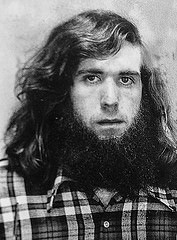 “Instead of going to university, I went to Asia. That was one of the best decisions I ever made,” says Kevin Kelly about following his instincts into the Big Here in the early 01970s.
“Instead of going to university, I went to Asia. That was one of the best decisions I ever made,” says Kevin Kelly about following his instincts into the Big Here in the early 01970s.
For someone who is probably best known as a technology pundit, it may be surprising to learn that his formative years were spent traveling in areas where his 35mm camera was often the most advanced technology for miles. But Kevin’s work has always been about cultures as well as technologies.
His career as a writer, editor and publisher has coincided with a time of unprecedented technological growth. And Kevin has been associated with many ground-breaking publications and organizations in that time. In 01984 he moved to California to edit CoEvolution Quarterly, which Stewart Brand had founded as a spin-off of the Whole Earth Catalog. The Quarterly soon was renamed as Whole Earth Review and Kevin served as its editor for the next 6 years. He also edited and published the Whole Earth Catalog for several of its later editions.
During that period Kevin also had a hand in founding The WELL, the influential early online community co-founded by Larry Brilliant and Stewart Brand, and the Hackers Conference. In the mid-90′s he again collaborated with Stewart and became a charter board member of The Long Now Foundation.
In 01992 Kevin joined Wired magazine prior to its launch and became its Executive Editor for the first 7 years of its existence. Wired won two National Magazine Awards during his tenure. He is still on staff at Wired as “Senior Maverick” and writes a few times a year for the magazine.
 But let’s get back to Asia in 1972. Kevin, then in his early twenties, dropped out after one year of college and set off camera-in-hand to wander throughout Afghanistan, Iran, Indonesia, China, Turkey, Japan, and everywhere in between. He had a drive to document aspects of these cultures that even then it was apparent were beginning to disappear. He lived on about $2,500 a year and shot 36,000 images during that time.
But let’s get back to Asia in 1972. Kevin, then in his early twenties, dropped out after one year of college and set off camera-in-hand to wander throughout Afghanistan, Iran, Indonesia, China, Turkey, Japan, and everywhere in between. He had a drive to document aspects of these cultures that even then it was apparent were beginning to disappear. He lived on about $2,500 a year and shot 36,000 images during that time.
I traveled solo most of the time I was shooting. I had lots of time and no money. I generally spent at least 2 months in a country; some like India and Taiwan I visited many times. I would be gone for years at a stretch. I would leave the US with 500 rolls of film in my backpack.
Years later Kevin created the book Asia Grace (Taschen, 02002) featuring hundreds of these photos. For which he did the layout and design himself. Now you’ll find many of those images on Kevin’s website for Asia Grace, continuing his tendency to make the books he sells in stores available for free online. You’ll find the full text for his books Out of Control and New Rules for the New Economy on Kevin’s KK.org site.
Of the cost of buying one of his books, versus reading it page-by-page online, Kevin suggests: Think of this as a printing service, not a book.
The Asia Grace site also includes Kevin’s extensive notes about producing the book including the cameras and film he used, his travel practices, and details on the hardware and software for every step of the printing process

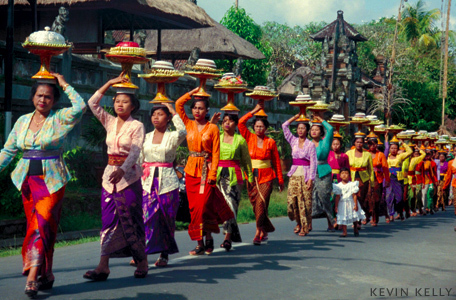
photos by Kevin Kelly from Asia Grace
Listing the equipment and methods he used is far from an afterthought. Kevin is always looking for reliable and innovative tools, and he likes to share what he finds. In 02000 he started an email list to post tool recommendations for his friends. That grew into the Cool Tools website, a public resource that continues to thrive. Last year Kevin self-published Cool Tools: A Catalog of Possibilities as a book; it includes info on more than a thousand recommended tools from the site, all submitted by users.
It is Kevin’s belief that all types of tools can be “cool”:
A cool tool can be any book, gadget, software, video, map, hardware, material, or website that is tried and true.
This broad notion of the tool-ness of everything that humans use is a precursor to Kevin’s thinking about the “technium”; he believes all these tools are related systemically. Here’s how he described the technium in his 02009 blog post “What Technology Wants” (which became the title of his 02010 book):
The technium is the sphere of visible technology and intangible organizations that form what we think of as modern culture. It is the current accumulation of all that humans have created. For the last 1,000 years, this techosphere has grown about 1.5% per year. It marks the difference between our lives now, verses 10,000 years ago. Our society is as dependent on this technological system as nature itself. Yet, like all systems it has its own agenda. Like all organisms the technium also wants.
In an interview earlier this year with Edge.org, Kevin said: I look at the network of all the technology in the world, past and present, as forming a system that seems to have its own urges and tendencies. Kevin has named his KK.org technology blog The Technium which points to both the importance and ubiquity he attributes to the idea.
Kevin has become one of our most insightful thinkers about technology. A recent New York Times profile called his technology-related predictions “often both grandiose and correct.” His writing helps us understand not only the bits and bolts of tech, but how technology and humanity interweave: like his famous idea of 1000 True Fans or his ground-breaking work in self-tracking and the Quantified Self. In 02011 Kevin identified six verbs that would characterize the online future; it’s three years in, see how you think he did.
On Wednesday, November 12th, 02014 we’ll all have the chance to hear from Kevin what the technium wants next: “Technium Unbound“ his Seminar About Long-term Thinking for Long Now at the SFJAZZ Center.
Recently Kevin recounted the story of creating Asia Grace in his talk at The XOXO Festival in Portland, talking to a new generation of creative makers…

photos of Kevin Kelly by Christopher Michel

Rick Prelinger Seminar Tickets
The Long Now Foundation’s monthly
Seminars About Long-term Thinking
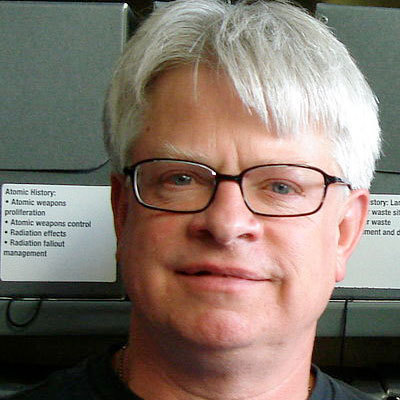
Rick Prelinger presents “Lost Landscapes of San Francisco, 9″
TICKETS
Thursday December 4, 02014 at 7:30pm Castro Theater
Long Now Members can reserve 2 seats, join today! General Tickets $15
About this Seminar:
This year’s LOST LANDSCAPES (the 9th year in a row!) will bring together familiar and unseen archival film clips showing San Francisco as it was and is no more.
Blanketing the 20th-century city, from the Bay to Ocean Beach, this screening includes San Franciscans at work and play; peace rallies in Golden Gate Park; early hippies in the Haight; a walk on the incomplete Golden Gate Bridge; newly-discovered images of Playland and the waterfront; families living and playing in their neighborhoods; detail-rich streetscapes of the late 1960s; 1930s color images of a busy Market Street; a selected reprise of greatest hits from years 1-7; and much, much more.
As usual, you’ll be the star at the glorious Castro — audience members are asked to identify places and events, ask questions, share their thoughts, and create an unruly interactive symphony of speculation about the city we’ve lost and the city we’d like to live in.

November 5, 2014
Larry Harvey Seminar Media
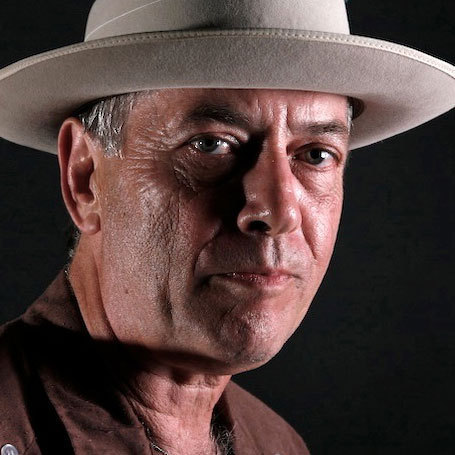 This lecture was presented as part of The Long Now Foundation’s monthly Seminars About Long-term Thinking.
This lecture was presented as part of The Long Now Foundation’s monthly Seminars About Long-term Thinking.
Why The Man Keeps Burning
Monday October 20, 02014 – San Francisco
Video is up on the Harvey Seminar page.
*********************
Audio is up on the Harvey Seminar page, or you can subscribe to our podcast.
*********************
The Hundred Year Burn – a summary by Paul Saffo
Stewart Brand’s flight from London was delayed causing him to miss this talk, so this months Seminar was hosted by Long Now executive director Alexander Rose, and the write up is by board member Paul Saffo.
Burning Man is like one of those birthday candles you can’t blow out,” observed Burning Man’s primary founder and Chief Philosophical Officer. Indeed, Burning Man has thrived in the face of Burners and skeptics alike declaring it dead after each of its first 25 years. Too big, too fashionable, too many rich people, too hard to get in: each year the rationale changes, and Burning Man continues to thrive.
Half of the secret is simplicity. Consider the Man. Before anything exists on the playa, Burning Man begins with a single stake pounded into the ground marking the spot where the Man will stand. This is the axis mundi of Burning Man, the point on which everything converges, from the radiating streets to the final ritual of the burn. The stake itself is the object of a spontaneous ritual: as it is placed each year, each crew-member gives the stake a few hammer-blows to drive it in.
The other half of Burning Man’s secret is transformation. “Just when you are done with one existential challenge, then you encounter another.” For example, in recent years, forty percent of Burning Man’s population are newcomers. “I am pretty comfortable with that – it is new energy that keeps things very much alive,” observed Harvey.
Burning Man is now setting on a course to thrive for another 75 years. Its Ten Principles are the compass and the newly established Philosophical Center is the think tank and “collective memory and conscience” helping guide Burning Man on this 100-year journey. Harvey observed that, “Corporations have a remarkably short life-span, while cities have a remarkably long life-span – drop an atom bomb on it and it comes right back. We will find our way. It always looks dubious when we set out because we are setting out in the dark. But your faith always guides you.” Our advice: mark your calendar for the last Monday of August 02090 and sign up early; the tickets are certain to sell out fast.
Subscribe to our Seminar email list for updates and summaries.

November 3, 2014
Rosetta Probe Landing: Live Stream & Breakfast Event
On November 12, 02014 from 6:00am to 9:00am PT, you can watch the live stream of the Rosetta Space Probe (which carries our Rosetta Disk) sending it’s lander, Philae, down to comet 67P.
Here in the Bay Area, The Long Now Foundation is partnering with the Chabot Space Center and swissnex SF to host a breakfast event at the Chabot Space & Science Center. The event will feature the live stream and our own Dr. Laura Welcher giving a presentation about the Rosetta Disk, as well as Chabot’s staff astronomer Ben Burress and a live Skype with Kathrin Altwegg from the European Space Operations Centre, Darmstadt. Doors & breakfast are at 6:00am; tickets and more information can be found here.
For over a decade, Long Now has closely watched the European Space Agency’s Rosetta Mission as it has orbited the Sun in search of comet 67P and untold scientific breakthroughs. This pioneering space probe was launched in early 02004, maneuvered itself into orbit around comet 67p earlier this year, and on November 12 it will be the first human-made craft to make contact with the nucleus of a comet.
For the latter purpose, the Rosetta probe carries Philae, a small landing craft bristling with scientific instruments and the harpoons and drills necessary to “landing” on a low-gravity object like a comet. At just four kilometers in diameter, comet 67P’s gravity is but a millionth of what we feel on Earth, which makes the landing a uniquely challenging endeavor.
While Philae descends towards the comet’s surface and immediately after it has touched down, it will perform a bevy of tests and observations in order to send back as much data as possible – via Rosetta, still orbiting the comet – in case any part of this tricky maneuver goes awry and damages or destroys the craft. Assuming the landing and deployment of Philae’s instruments goes according to plan, the probe will continue to monitor and study the comet as it approaches the Sun and heats up. At some point in March of 02015, it is expected that comet 67P’s proximity to the Sun will cause Philae to overheat, ending its useful life.
While Rosetta has been in orbit around comet 67P, it has been studying the terrain in search of a relatively safe landing spot for Philae. The comet’s landscape is characterized primarily by jagged cliffs and boulders, but the ESA team identified five potential options before choosing their preferred target for the November 12, 02014 landing.

The location of the Rosetta Disk on the Rosetta Spacecraft
Near the turn of the century, while the mission was coming together here on terra firma, a member of the ESA team contacted Long Now because of our own Rosetta Project.
The ESA’s Rosetta probe was inspired by the Egyptian artifact, just as our Rosetta Project was, because of what an essential historical “key” it represented. By allowing linguists and historians to decipher the long-forgotten hieroglyphics of ancient Egypt, the Rosetta Stone “unlocked” the writings of the rich and long-standing culture that built the Great Pyramids, the Great Sphinx and ruled the Nile delta for millennia.
ESA’s scientists hope that comet 67P will serve a similar unlocking role for our understanding of life on Earth. It’s hypothesized that the molecules that eventually became DNA and gave rise to all living things on our planet came not from the Earth itself, but instead from comets and asteroids of the early solar system. By landing Philae directly onto the comet’s surface, scientists will have their first opportunity to directly analyze the material of a cometary nucleus for signs of the ancient organic molecules that can confirm this theory.
Long Now’s Rosetta Project has created a micro-etched, nickel disk meant to last thousands of years that houses an archive of human languages so that future archaeologists and linguists might be able to unlock the writings of civilizations whose languages are likely to be lost in coming centuries.
Inspired by the resonance of this hope to unlock knowledge of the past and future, the ESA team offered to put a copy of the Rosetta Disk on the Rosetta Probe and at this very moment an archive of 1,500 human languages is floating out among the solar system, in orbit around comet 67P.

October 30, 2014
Karen Marcelo at The Interval: San Francisco’s Art and Tech-Hacking History

Karen Marcelo photo by Jay Bain
Karen Marcelo (dorkbot SF, Survival Research Labs)
Tuesday November 4, 02014 7:30pm
at The Interval (check-in at 6:30)
Advanced Tickets recommended
Programmer, artist, and founder of dorkbot SF, Karen Marcelo discusses the tradition of San Francisco Bay Area technologically-minded artists and hackers in the past, present and future. For decades a curious creativity has thrived in the shadows of the high tech industry’s most famous valley. More J. G. Ballard than VC Capital. Un-monetized, non-productized, often subversive and sometimes in fact quite dangerous. Karen has been creating work herself and curating a community of tech makers and re-animators from way before 3-D printers, Maker Faire, or Arduinos existed.
From San Francisco to Silicon Valley, since at least the late 01970s when Survival Research Labs was founded, the wealth of technological know-how and hand-me-down / cast-off resources in the area have led to all kinds of artistic endeavors of decidedly uncommercial sorts. Made by people with day jobs in mainstream tech firms or outsiders with an axe to grind, there’s a rusty cutting edge at the back of the tech startup garage. On Tuesday we’ll talk about it and The Interval.
Come hear about the history of loud, fiery machines and hacker artists in San Francisco and surrounding areas from someone at the center of the noise for years. Karen will talk about tech and art projects including her own work with Survival Research Labs and organizing dorkbot SF for more than a decade.
Our Interval event series tends to sell out ahead of time, so get your tickets now! Donate to The Interval and you’ll be on our early notification list for all of our Tuesday salon talks.

October 28, 2014
Growing A Book For One Hundred Years
It started with a seed planted in the mind of Scottish artist Katie Paterson when she made the connection between tree rings and chapters of books. Now several years in the making, Paterson’s vision will unfold over the next century in her artwork Future Library–an ambitious and evolving piece that will outlive Paterson and most of us living today.
In the summer of 02014, Paterson and her team planted 1,000 Norwegian Spruce saplings in the forest Normarka, situated just outside of Oslo. The site is about a 25-minute walk from a metro station, yet according to Paterson, feels deep within the forest and has no city sounds.
These trees will supply the paper for an anthology of books to be printed in a hundred years’ time, when the saplings are fully grown. In the meantime, one writer every year will be invited to add a new text to the collection of unpublished, unread manuscripts held in trust at the New Public Deichmanske Library in Bjørvika until their publication date in 02114. The text can take on any length, form, and genre. The only request is to have the work submitted by manuscript within one year of invitation. As the trees grow, so does the collection. Katie Paterson explained:
The idea to grow trees to print books arose for me through making a connection with tree rings to chapters – the material nature of paper, pulp and books, and imagining the writer’s thoughts infusing themselves, ‘becoming’ the trees. Almost as if the trees absorb the writer’s words like air or water, and the tree rings become chapters, spaced out over the years to come…This artwork will bring together the work of preeminent writers, thinkers and philosophers of this and future generations. It is an artwork that belongs not only to us and the City of Oslo now, but to these who are not yet born.
With the forest planted, the next key part of the Future Library is designing the Silent Room to house the unpublished texts in the New Deichmanske Library, which will open in 02018. In collaboration with the library’s architects Lund Hagem and Atelier Oslo, Paterson is specially constructing this room from the cut-down trees recently cleared for the Future Library saplings.
The Silent Room will be located on the top floor of the library – the floor that houses the library’s special collection of books and archives. The small, intimate room will be geared for one or two people; it will face the forest, awaiting the growth of the trees and providing a view of where, in essence, the books are developing. The other aspect of the texts–the unpublished manuscripts–will be contained here with only the authors’ names, the title of their work and the year visible to visiting patrons. Katie Paterson explained:
The atmosphere is key in our design, aiming to create a sense of quietude, peacefulness, a contemplative space which can allow the imagination to journey to the forest, the trees, the writing, the deep time, the invisible connections, the mystery.
As is the case with any long-term project, questions of trust dominate the design of Paterson’s Future Library. Planning a project with a timescale of 100 years provides many challenges, such as the consideration of tree types, native Norwegian pests, climate, or potential fires; communicating across time; ensuring access to a printing press (one will be stored in Oslo and workshops will be held for the next generations in printing and binding books); and crafting 100-year contracts with lawyers. How will the library room be looked at and experienced in a century? How will the materials react over the decades to come? What languages will people be speaking in 02114? What kind of technologies will exist? What will be the status of the printed book, the written word? Paterson asked herself 100-year-timespan questions such as these with every decision made for Future Library. It involves thinking and developing on a timespan that transcends most conventional artwork. Paterson explained:
The works like Future Library really slow the pace down, to over a century. There is still constant movement within the artwork; inviting authors, the library room design, trust meetings, forest tending, yearly events, the writing, even the tree rings forming. Future Library will evolve and live over ‘long time’ and over ‘now’ simultaneously…I like the idea that time is substance, that can be manipulated and invented. I certainly see time as non-linear – reaches of time, webs, loops, networks, holes – and visualize time growing and existing like a cell or a wave, expanding and contracting. Future Library is marked out by yearly demarcations and these ‘chapters’ keep it fluid.
Future Library was conceived by Paterson, is commissioned and supported by the Bjørvika Utvikling urban development project, and produced by the Bristol-based arts producer Situations. A Future Library Trust has been established to help sustain Future Library for its 100-year duration. It consists of seven members, including the literary director of the Man Booker Prize. Its members will change decade by decade, and they are the ones to invite the 100 authors, whose names will be announced year by year. The authors are being selected for their “outstanding contributions to literature or poetry and for their work’s ability to capture the imagination of this and future generation.”
This month, award-winning author Margaret Atwood was named as the first contributor to the Future Library. The author of novels such as Daughters of the North and Oryx and Crake (both of which will be included in Long Now’s own Manual for Civilization) is in many ways ideally suited for a collection like Future Library: much of Atwood’s work explores human lives and lived experience in a variety of possible futures. As Paterson explains,
[Atwood] is incredibly perceptive, continually writing about prescient subjects and her work speaks across generations, across time. She writes about time and catapults her readers to a future time and place, projecting unsettling, strange, dystopian worlds. Her work has so much to say about us alive now and futures we are building as a species.
Atwood has already started writing the tale that only she will read during her lifetime.
When asked about the content of her story in an interview with the Louisiana Channel, Atwood stated that wild horses could not drag it out of her:
I think it takes us to that period of childhood when we used to bury things in secret locations and hope that somebody would come and dig them up. Or that other period when we put messages in bottles and put them into the ocean. But essentially that’s what writing is anyway, so publishing a book is like a message in the bottle and throwing it in the ocean because you never know who will read it. And writing and publishing a book is also like time travel because the book is a vehicle for the voice, and it doesn’t turn into a voice again until somebody at the other end reads it. So in this case, the filament between the launching of the book and the turning of the book back into voice just happens to be longer than usual.
On a cosmic timescale, a span of 100 years is fleeting and insignificant. “However, in many ways the human timescale of 100 years is more confronting,” Paterson explains. “It is beyond many of our current life spans, but close enough to come face to face with it, to comprehend and relativize.”
What can help us confront and comprehend this short-yet-long timespan is, perhaps, a sense of hope and optimism. The Future Library project, for its part, tries to encourage these perspectives. In her reply letter to her Future Library invitation, Atwood wrote, “This project, at least, believes the human race will still be around in a hundred years!” Paterson expands upon Atwood’s statement in her own words:
In its essence, Future Library is hopeful – it believes there will be a forest, a book, and a reader in 100 years. The choices of this generation will shape the centuries to come, perhaps in an unprecedented way. Inside the forest time stands still. This place could have existed for one hundred, one thousand, one million, or even one hundred million years. I take comfort in the natural processes that have unfolded over such enormous expanses of time. Imagining the plethora of living beings that have evolved in its ecosystem. The earth itself has a predicted lifespan of another few billion years, and there are millions of other planets and galaxies. Life in this universe will continue to exist.

October 27, 2014
Larry Harvey Seminar Media
 This lecture was presented as part of The Long Now Foundation’s monthly Seminars About Long-term Thinking.
This lecture was presented as part of The Long Now Foundation’s monthly Seminars About Long-term Thinking.
Why The Man Keeps Burning
Monday October 20, 02014 – San Francisco
Audio is up on the Harvey Seminar page, or you can subscribe to our podcast.
*********************
The Hundred Year Burn – a summary by Paul Saffo
Stewart Brand’s flight from London was delayed causing him to miss this talk, so this months Seminar was hosted by Long Now executive director Alexander Rose, and the write up is by board member Paul Saffo.
Burning Man is like one of those birthday candles you can’t blow out,” observed Burning Man’s primary founder and Chief Philosophical Officer. Indeed, Burning Man has thrived in the face of Burners and skeptics alike declaring it dead after each of its first 25 years. Too big, too fashionable, too many rich people, too hard to get in: each year the rationale changes, and Burning Man continues to thrive.
Half of the secret is simplicity. Consider the Man. Before anything exists on the playa, Burning Man begins with a single stake pounded into the ground marking the spot where the Man will stand. This is the axis mundi of Burning Man, the point on which everything converges, from the radiating streets to the final ritual of the burn. The stake itself is the object of a spontaneous ritual: as it is placed each year, each crew-member gives the stake a few hammer-blows to drive it in.
The other half of Burning Man’s secret is transformation. “Just when you are done with one existential challenge, then you encounter another.” For example, in recent years, forty percent of Burning Man’s population are newcomers. “I am pretty comfortable with that – it is new energy that keeps things very much alive,” observed Harvey.
Burning Man is now setting on a course to thrive for another 75 years. Its Ten Principles are the compass and the newly established Philosophical Center is the think tank and “collective memory and conscience” helping guide Burning Man on this 100-year journey. Harvey observed that, “Corporations have a remarkably short life-span, while cities have a remarkably long life-span – drop an atom bomb on it and it comes right back. We will find our way. It always looks dubious when we set out because we are setting out in the dark. But your faith always guides you.” Our advice: mark your calendar for the last Monday of August 02090 and sign up early; the tickets are certain to sell out fast.
Subscribe to our Seminar email list for updates and summaries.

October 23, 2014
Alexander Rose on The 10,000 Year Clock @ The Interval, Tuesday 10/28

Alexander Rose photo by Christopher Michel
Alexander Rose: Designing for Longevity
Building The 10,000 Year Clock
Tuesday October 28, 02014 at 7:30pm
at The Interval (check-in at 6:30)
Advanced Tickets recommended
Late in the last millennium, Danny Hillis told a small group of friends about his idea for building a monument-scale clock that would last for 10,000 years. The group included Stewart Brand, Kevin Kelly, and Brian Eno – and the conversations that followed led to the founding of The Long Now Foundation in 01996. Ever since then, Long Now has worked to bring the Clock into reality.
Alexander Rose has been there almost from the start. The first employee of Long Now, he assisted Danny Hillis in early design work. Now he is the Foundation’s Executive Director and serves as the project manager for the full-sized Clock construction which is now underway in Texas. In his talk at The Interval he will discuss both the beginnings of the Clock project and where we are today.
The Clock has been built slowly, methodically, with a dedication to doing it right for the long term. And without a short-term deadline. The design process has been slow and painstaking. Our prototypes are built from the highest-quality materials and feature hand-crafted custom work. Our durability testing approximates the wear of slow moving mechanisms running for thousands of years.
Tickets are still available but space is limited and this talk will sell out
This talk will also include the lessons that Long Now’s team has learned from studying these previous millennial design projects. Alexander has travelled the world researching other projects designed to last for a thousand years or more. These include the Svalbard Global Seed Vault, the Granite Mountain Records Vault built by the Mormon Church, and most recently Ise Grand Shrine in Japan.
Alexander Rose is Executive Director of The Long Now Foundation and project manager of the construction of the full-sized 10,000 Year Clock which is now underway in West Texas.
Alexander’s combat robots have won six world championship titles and appeared in the TV show BattleBots. Alexander has built large pyrotechnic displays for the Burning Man festival, robotic bartenders, and other dangerous machines. He is part of the Thiel Fellowship Network, and founded the Robot Fighting League.

Stewart Brand's Blog
- Stewart Brand's profile
- 291 followers


